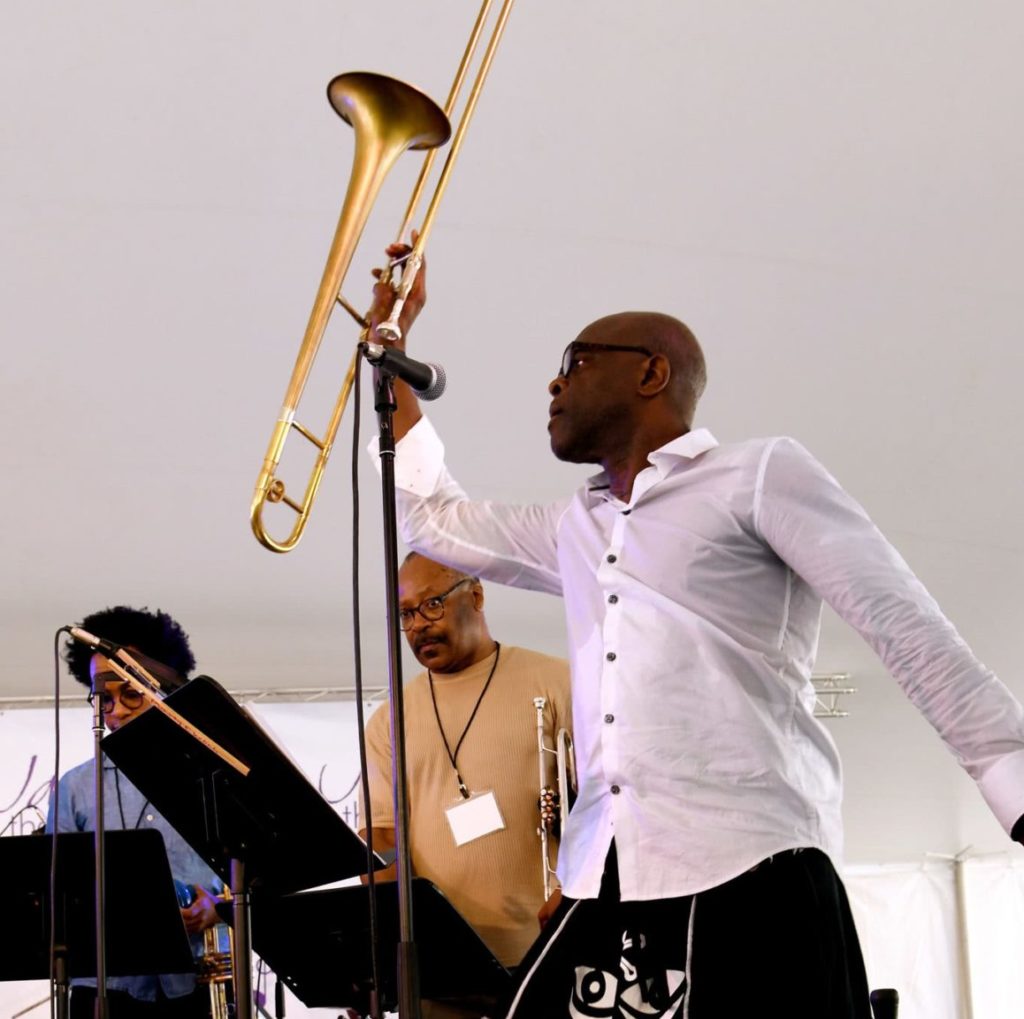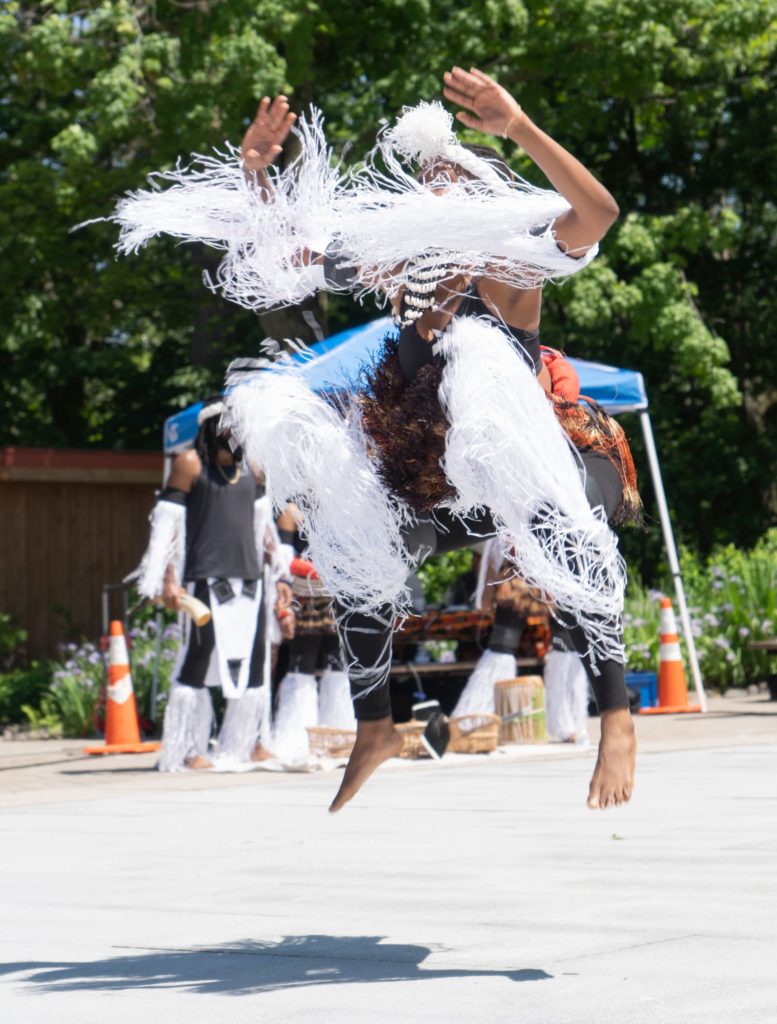
HueArts NYC Brown Paper
Recommendations & Action steps
To return to a question posed at the outset of this paper: How can policymakers, funders, and others help arts entities founded and led by Black, Indigenous, Latine, Asian, Pacific Islander, Middle Eastern, and all People of Color to thrive in the long-term? Based on the findings above, and arranged by the same thematic categories, we have developed a series of recommendations (the items in bold). One or more specific action steps follow each recommendation.
- Funding & Finance
- Staffing & Professional Development
- Recognizing Value
- Physical Space & Built Environment
- Advocacy & Community Building/Breaking Down Silos
Funding & Finance
1 – Create a designated fund for arts and cultural entities led by and centering Black, Indigenous, Latine, Asian, Pacific Islander, Middle Eastern, and all People of Color throughout NY State
- Museum Hue leads the initiative in establishing such a fund (modeled after the Creatives Rebuild New York, but with no expiration date)
- NYSCA partners with private foundations to increase the funding pool and distribution
- Prioritize grants for multi-year general operating funds (without an expectation to meet the state’s tourism goals)
- Evaluate performance based on metrics of success co-developed with BIPOC arts and cultural leaders in New York State that value the contributions of POC arts and cultural entities more holistically within their communities
- Require that metrics consider the specific challenges of needing to provide wraparound community services in addition to or as part of arts programming (eg. workforce development, childcare, advocacy, etc.) to give people agency over their culture
2 – Ensure greater equity in the distribution of state funds by including more BIPOC leaders/artists to be involved in everything from shaping guidelines and evaluating applications to awarding grants
- NYSCA to ensure that their grant panels include POC leaders/artists jurors and encourage public and private funders to include BIPOC artists and leaders in the development of guidelines and metrics for success
- Museum Hue to lead effort in getting more public and private funders to include BIPOC artists and leaders on panels, and in the development of guidelines and metrics for success
- Require NYSCA jurors to complete racial bias + culture/historic training
- Hold NYSCA accountable to equity goals, practices, and policies with regard to employment within the agency
3 – Increase unrestricted multi-year NYSCA funding for POC-led arts entities to build their organizational capacity and stability over time
- Streamline application process by creating a “Common Application” for all NY local, county, regional, and state grants related to arts and culture
- Provide more technical assistance to applicants on the grant application process, including increased accessibility such as applying via video essay or video application and translators / assistants to the application process; and to encourage private funders to do the same
- Simplify the grant application and reporting process to enable POC arts and cultural entities with limited budgets who are volunteer-run or have limited staffing, and (often) have no dedicated grant writer to apply for grants
- Require that arts councils provide multiple ways for arts and cultural entities to apply for grants (i.e. online, in-person, and through partnership with libraries, community centers, and other venues that provide free internet access)
- Ensure that grant information sessions and workshops are held at accessible sites in communities to lower barriers to participation; encourage the same for private funders
- Increase funding for hiring grant writers or fundraising staff or securing technical assistance on writing proposals/preparing grant applications
4 – Establish a line-item for the arts and culture in every municipal and county budget
- Work with NYSCA regrant partners to promote municipal and county participatory budgeting processes, and to recognize the arts as an integral part of the state’s long-term investments
5 – Separate tourism + marketing dollars from cultural/arts fund dollars
- Remove reporting requirements around ticket sales, patron information, and other quantitative data that privileges certain forms of art over others
- Remove restrictions that bar small organizations from participating in tourism funds, for example, a number of days per week an organization must be open
- Create more local funding opportunities outside of tourism

Staffing & Professional Development
The call for increased unrestricted (general operating) funding above is crucially and intrinsically tied to the capacity for adequate, stable staffing and appropriate compensation. In addition, we make the following recommendations related to current and future staffing concerns:
1 – Create career development opportunities for current and future Black, Indigenous, Latine, Asian, Pacific Islander, Middle Eastern, and all People of Color artists, arts administrators, and leaders
- Fund paid internships and fellowships at POC arts and culture entities
- Provide funding for technical assistance, training, and professional development in fundraising/development, talent development, finance, tech, and other areas
- Fund collaborations with high schools and colleges to connect POC students to POC-led arts and culture entities, to the arts, and to future careers in the arts and cultural field
- Create a stipend for mentorships for emerging and mid-career POC arts professionals and organizers
- Create and sustain a peer network of POC arts and cultural leaders for ongoing information/resource-sharing, collaboration, mentorship, and community building
2 – Support deeper data collection initiatives to quantify, qualify, and track the staffing needs of POC-led arts and cultural entities to deliver programs and sustain their organizations
- Create funding opportunities and grants to work with POC arts and cultural entities to collect this data (through surveys and interviews) and deliver these programs
- Develop a database of individuals and entities that work in the arts and cultural sector to support entities in meeting their staffing needs

Recognizing Value
1 – Require all publicly-funded decision-making bodies to include BIPOC arts and cultural leaders to share decision-making power
- Secure public and private funding for Museum Hue to serve as a “defacto” BIPOC arts council (with a similar structure to NYSCA’s decentralization grant-making sites) that administers funds and pushes forward an equity agenda
- Invite BIPOC arts and cultural leaders onto councils and boards to contribute ideas at the strategic development stage when making decisions regarding tourism, city development and planning and other long-term investment in the arts
- Require decision-makers to complete racial bias and cultural/historic training
2 – Support state-wide data collection efforts to track impact of tourism and other funding on POC-led arts and cultural entities
- Identify POC-led arts and cultural entities receiving state and local tourism dollars, and track data over time
- Analyze data and report findings on the impact of tourism on POC-led communities, POC artists’ involvement, tourism funding for POC-led arts and culture entities, etc.
- Increase public and private support for the field to engage in more rigorous data collection and reports on findings as integral to promoting equity, transparency, and accountability
3 – Establish a state-wide history and arts and culture passport program that educates public on place-based history and promotes local knowledge
- Promote awareness and visibility campaigns to uplift work of local organizations (e.g. Black history tour, passport, etc.)
- Link those programs to school arts education curricula
- In consultation with the leaders of arts and culture entities which are part of sovereign nations, establish and implement specific processes to ensure those entities can participate in these cooperative education programs in ways that work for those Indigenous communities
4 – Track and hold PWI’s (Predominantly White Institutions) accountable to their Diversity, Equity, Inclusion, and Access (DEIA) commitments

- PWIs to compensate (at market rate equal to what they would pay other consultants for their professional expertise) POC-led arts and culture leaders for their expertise in programming and outreach, inclusion in their reporting and promotional materials (photos), or community partnerships
- POC arts and culture leaders to require compensation for their services when asked to participate in Diversity, Equity, Inclusion, and Access initiatives led by PWIs
- Develop metrics to track Diversity, Equity, Inclusion, and Access commitments from PWIs and create an open, public watchlist holding them accountable to their commitments and recording any predatory or tokenizing behaviors
“Looking at the mechanisms and barriers artists face in achieving success, I see a real need for building up professional development, grant writing support, and sitting on panels. We’re much more effective when we have an inside look at the grantmaking process, so I really encourage our community members to sit on these panels.”
—Cjala Surratt, Black Artist Collective
Physical Space/Built Environment
1 – Create more opportunities that allow place-based POC-led arts entities to continue supporting their communities
- Promote greater agency over POC-centered space by facilitating more inter-municipal agreements that allow arts and cultural entities to secure long-term leases in city owned and managed property
- Gather case studies on cities /municipalities that have successfully:
- Partnered with developers of new mixed-use spaces to allocate a portion of the space to housing nonprofit arts and culture entities
- Written policy requiring disposition of public land to go to nonprofits or community land trusts (CLTs) before private developers
- Create a designated fund providing technical assistance and training on raising capital funds, building an endowment, identifying landlords and properties, acquiring and maintaining space, tapping opportunity zones, and preserving documented historical sites
- Create a network of design and engineering firms to partner with arts organizations to develop design drawings and a design package
- Create opportunities for intentional place-keeping where developers are in conversation with people who make culture

Southhampton African American Museum
Advocacy and Community Building/Breaking Down Silos
1 – Create opportunities that break down silos and foster relationships between BIPOC community leaders and within sovereign nations
- NYSCA and private funders to support an exchange program between different regions in New York State, and between entities identified in HueArts NYS and HueArts NYC projects
- Create more opportunities for POC arts leaders to convene and share successful models and strategies for strengthening their organizations (eg. scaling up, building capacity, navigating state and local funding, etc.)
- Support efforts to increase free Internet access and cellular service in POC-centered communities, particularly in rural and low-income areas (bridging the digital divide)
- Encourage PWI cultural institutions across the state to connect with, learn from, and partner with BIPOC arts and cultural entities
2 – Research and report on the specific needs of each region of New York State
- Continue the data collection efforts initiated through this Hue Arts NYS project to look more closely and individually at the state’s distinct regions (each has unique funding challenges, in addition to cultural and geographical nuances)
3 – Increase transportation infrastructure across New York State
- Advocate for New York State to promote public and private transportation initiatives that allow more POC communities (audiences) to reach and access POC-centered arts program offerings throughout the state

“It really warms my heart that we’re all here together discussing this, and I feel way less alone. Because one of the things that really bothers me is that it seems like in the non-profit sector we’re forced to compete for funding.”
—Town Hall Attendee
Top Photo: TransArt, Jazz in the Valley

